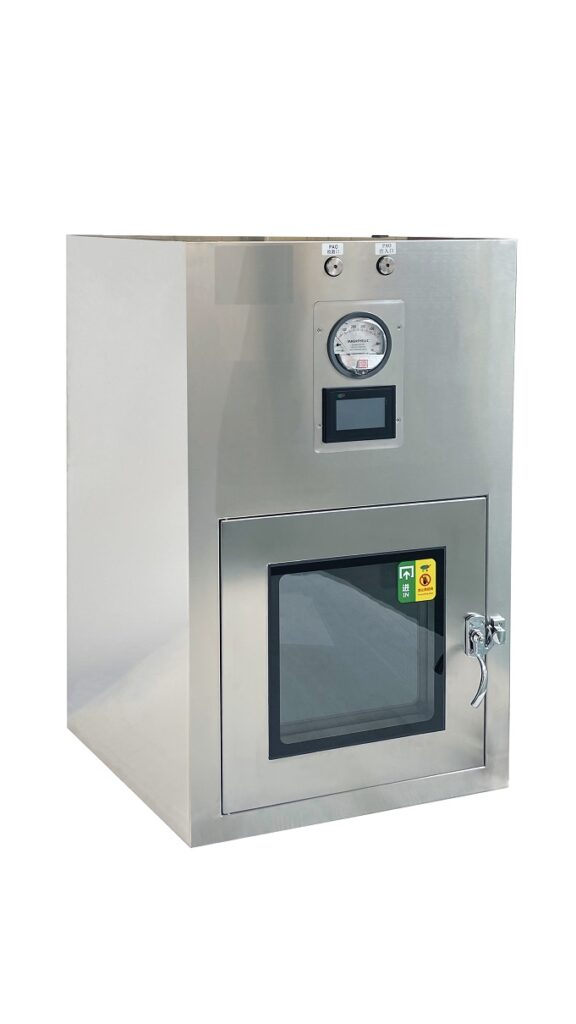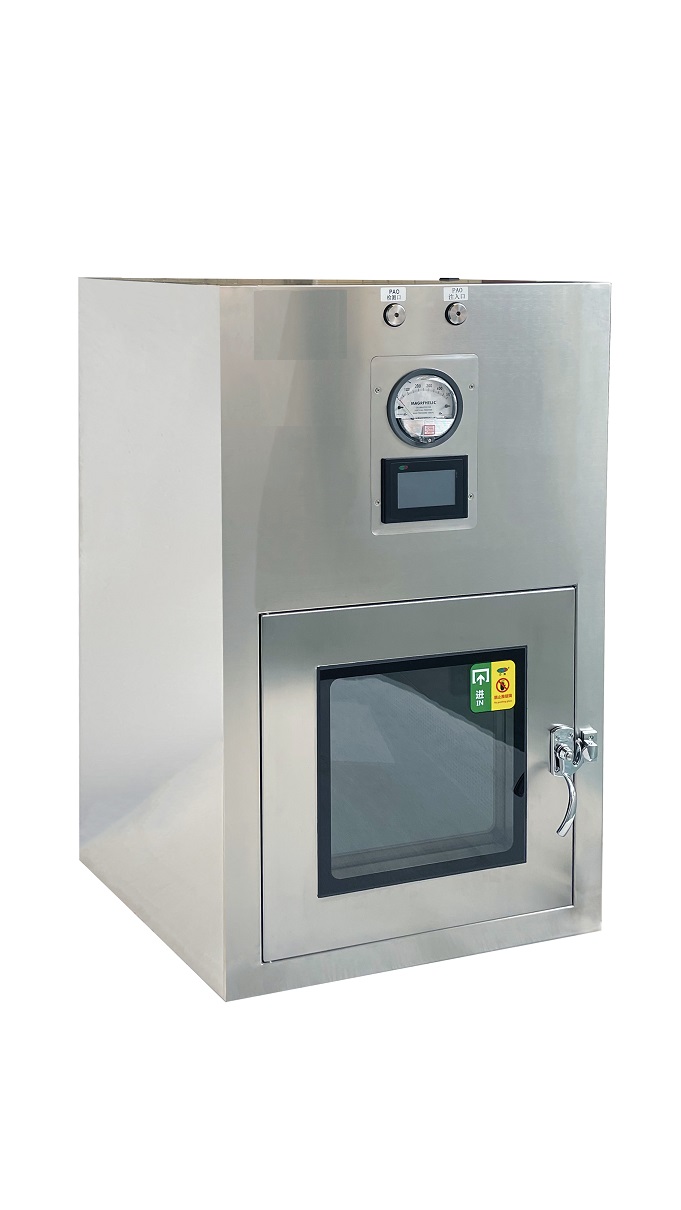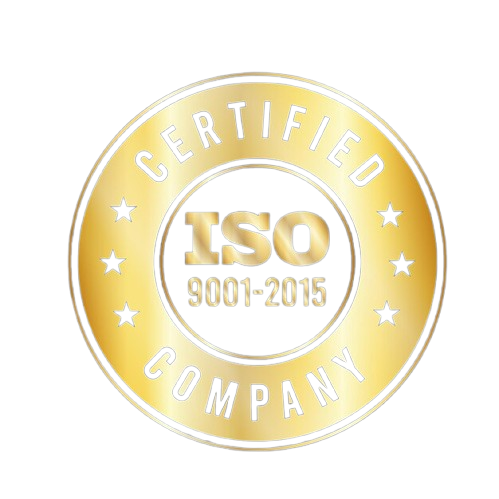Table of Contents
- Introduction
- What Is a Dynamic Pass Box?
- How Does a Dynamic Pass Box Work?
- When Should You Use a Dynamic Pass Box?
- Where Are Dynamic Pass Boxes Commonly Installed?
- Standard Sizes of Dynamic Pass Boxes
- How to Maintain a Dynamic Pass Box?
- Frequently Asked Questions About Dynamic Pass Boxes
- Conclusion
Introduction
In cleanroom environments, controlling contamination is crucial. A key component in achieving this is the dynamic pass box. This article aims to provide beginners with a comprehensive understanding of dynamic pass boxes, including their definition, operation, applications, standard sizes, maintenance, and common queries.
What Is a Dynamic Pass Box?
A dynamic pass box is a specialized equipment used to transfer materials between areas of differing cleanliness levels within a facility. It is designed to prevent cross-contamination by incorporating a built-in air circulation system, typically featuring High-Efficiency Particulate Air (HEPA) filters. This system ensures that the air inside the pass box remains clean during the transfer process.
How Does a Dynamic Pass Box Work?
Dynamic pass boxes operate by creating a controlled environment for material transfer:
- Interlocked Doors: Equipped with two doors on opposite sides, the pass box uses an interlocking mechanism to ensure that only one door can be opened at a time, preventing direct airflow between different areas.
- Air Circulation System: A built-in fan or blower circulates air through HEPA filters, removing particles as small as 0.3 microns. This filtration maintains a sterile environment inside the pass box during material transfer.
- Positive Pressure Maintenance: The system maintains positive pressure within the pass box, preventing contaminants from entering when the door on the cleaner side is opened.
When Should You Use a Dynamic Pass Box?
Dynamic pass boxes are ideal for transferring materials between areas with different cleanliness classifications. They are particularly useful when moving items from a less controlled environment to a more controlled one, as the built-in air filtration system minimizes the risk of introducing contaminants.
Where Are Dynamic Pass Boxes Commonly Installed?
These pass boxes are commonly installed in industries such as pharmaceuticals, biotechnology, electronics manufacturing, and food processing. They are typically positioned between rooms of differing cleanliness levels to facilitate the safe transfer of materials without compromising the cleanroom environment.
Standard Sizes of Dynamic Pass Boxes
Dynamic pass boxes come in various sizes to accommodate different material transfer needs. Here are some standard dimensions:
- Internal Dimensions:
- 500 mm (W) x 500 mm (D) x 500 mm (H)
- 600 mm (W) x 600 mm (D) x 600 mm (H)
- 750 mm (W) x 750 mm (D) x 750 mm (H)
- 900 mm (W) x 900 mm (D) x 900 mm (H)
- External Dimensions:
- 570 mm (W) x 580 mm (D) x 900 mm (H)
- 770 mm (W) x 680 mm (D) x 1200 mm (H)
- 920 mm (W) x 830 mm (D) x 1350 mm (H)
- 1060 mm (W) x 970 mm (D) x 1800 mm (H)
These dimensions can vary based on manufacturer specifications and custom requirements. It’s essential to select a size that aligns with the materials being transferred and the spatial constraints of the installation site.

How to Maintain a Dynamic Pass Box?
Proper maintenance of a dynamic pass box is essential to ensure its effectiveness:
- Regular Cleaning: Clean both the interior and exterior surfaces with appropriate disinfectants to prevent contamination buildup.
- HEPA Filter Monitoring: Regularly check the differential pressure gauge to monitor the HEPA filter’s condition. Replace the filter when it reaches the manufacturer’s recommended final pressure drop, typically between 250 to 450 Pa.
- Interlock System Checks: Periodically test the interlocking mechanism to ensure that both doors cannot be opened simultaneously. Promptly address any malfunctions to maintain contamination control.
- UV Lamp Maintenance: If the pass box includes UV lamps for sterilization, monitor their operational hours and replace them as recommended by the manufacturer to ensure effective disinfection.
Frequently Asked Questions About Dynamic Pass Boxes
- What is the key difference between dynamic and static pass boxes?
Dynamic pass boxes have a built-in air circulation system with HEPA filters, allowing them to transfer materials between areas of different cleanliness levels. Static pass boxes lack this feature and are used between areas of the same cleanliness level. - What does the differential pressure gauge on a dynamic pass box measure?
The differential pressure gauge measures the pressure difference across the HEPA filter, indicating its condition. Monitoring this helps determine when the filter requires replacement. - When should the HEPA filter in a dynamic pass box be replaced?
The HEPA filter should be replaced when the differential pressure reaches the manufacturer’s specified final pressure drop, usually between 250 to 450 Pa. Regular monitoring ensures optimal performance. - Can both doors of a dynamic pass box be opened simultaneously?
No, the interlocking mechanism ensures that only one door can be opened at a time to prevent cross-contamination between areas. - Is UV sterilization necessary in a dynamic pass box?
While not mandatory, UV sterilization adds an extra layer of contamination control by neutralizing microorganisms on materials being transferred.
Conclusion
Dynamic pass boxes are essential components in maintaining the integrity of cleanroom environments. By facilitating the safe transfer of materials between areas with differing cleanliness levels, they effectively prevent cross-contamination. Equipped with features such as HEPA filtration, interlocked doors, and, in some models, UV sterilization, dynamic pass boxes ensure that the stringent standards of controlled environments are upheld. Regular maintenance, including cleaning and monitoring of filters and interlock systems, is crucial to their optimal performance. Understanding their operation and applications enables industries like pharmaceuticals, biotechnology, and electronics manufacturing to maintain high levels of contamination control, ensuring product quality and safety.




